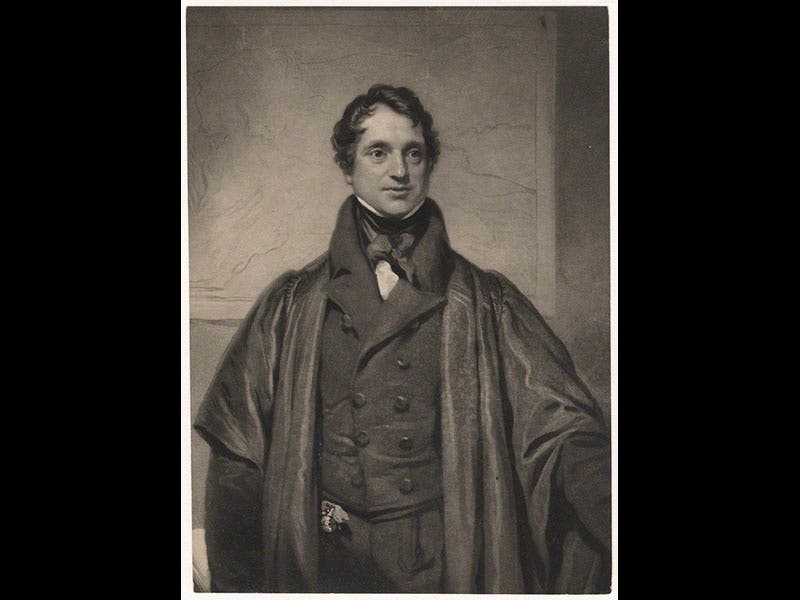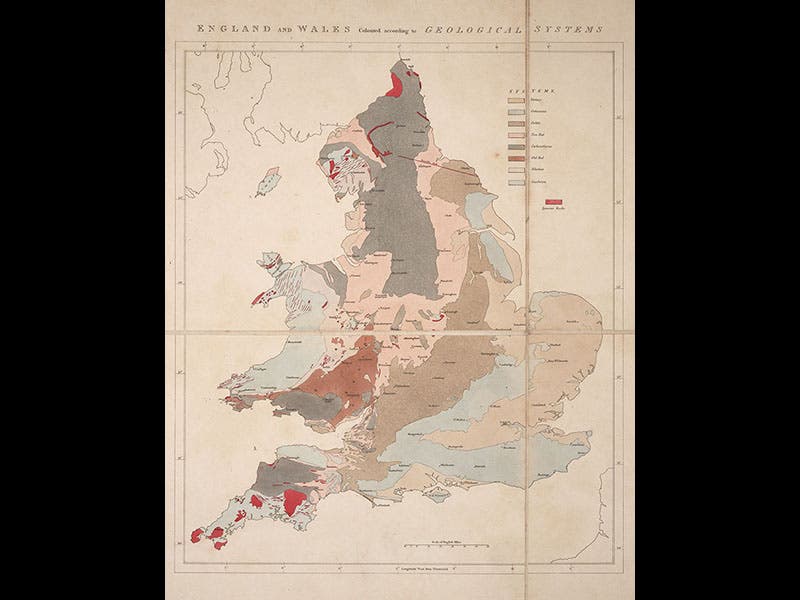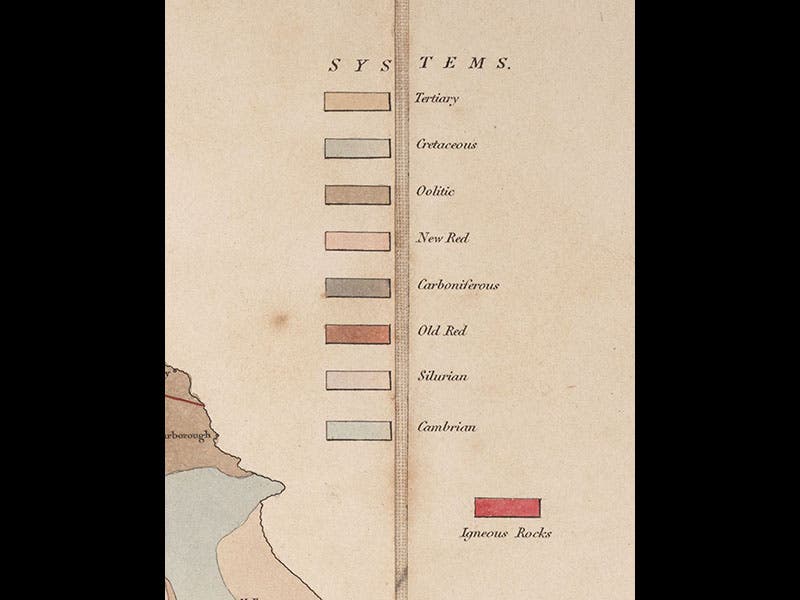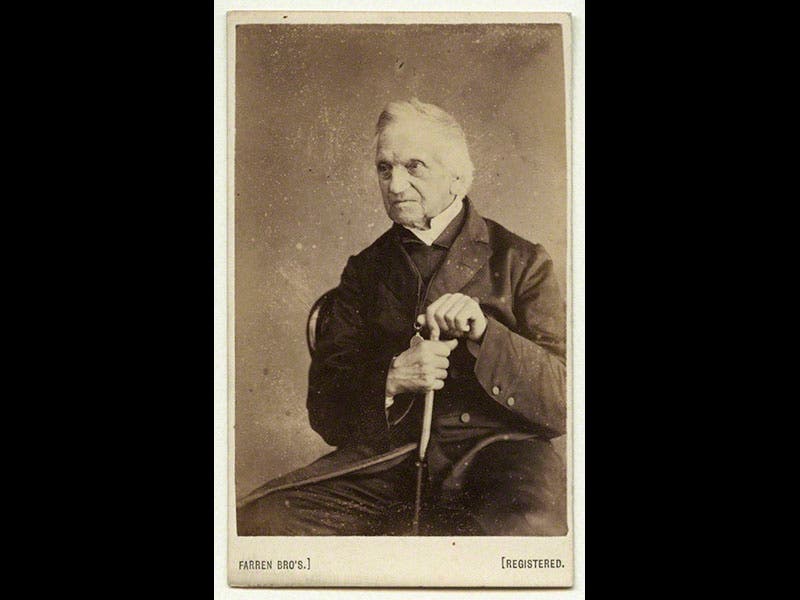Scientist of the Day - Adam Sedgwick
Adam Sedgwick, an English geologist, was born Mar. 22, 1785. In 1831, Sedgwick and an older colleague, Roderick Murchison, decided to investigate the geological formations of Wales, hoping to discover systems that underlay the Old Red Sandstone of western England, which was the oldest rock formation known to English geologists. Both were successful; Sedgwick went to northern Wales and discovered the Cambrian system (announced in 1835), while Murchison toured southern Wales and found a different system of underlying rocks, which he called the Silurian system. The Cambrian system seemed to be the older system, with more primitive fossils than the Silurian. On the geological map of England above (second image), we see at the very left the light blue color of the Cambrian and the pink beige of the Silurian, indicated by the legend that accompanies the map (third image). The map above is a detail of a much larger map that accompanies Murchison’s monograph, The Silurian System (1839), which we have in our History of Science Collection.
All was well until it was discovered that the upper formations of Sedgwick's Cambrian system overlapped the lowest levels of Murchison's Silurian system. Neither man was willing to give up the overlapping formation, and the two men, formerly best friends, became bitter enemies. Murchison had the position of power, since he became Director of the Geological Survey of Great Britain, and by the mid-1850s, Geological Survey maps began to show a very large Silurian system and no Cambrian system at all--it had been totally swallowed up by Murchison’s Silurian system. Needless to say, Sedgwick was none too pleased with this development, but he was powerless to do anything about it. Shortly after Sedgwick’s death (1873), in 1879, the overlapping system was given its own name, the Ordovician system, and the Cambrian system was once again restored to good graces, and it has remained that way to the present day, as the Cambrian, Ordovician, and Silurian constitute the first three systems of the Paleozoic era.
There is a handsome mezzotint portrait of the young Sedgwick in the National Portrait Gallery in London (first image). The Gallery also has a photograph of an older Sedgwick (fourth image), who looks somewhat soured by his life experiences.
Dr. William B. Ashworth, Jr., Consultant for the History of Science, Linda Hall Library and Associate Professor, Department of History, University of Missouri-Kansas City. Comments or corrections are welcome; please direct to ashworthw@umkc.edu.








![Using an astrolabe to measure the depth of a well, woodcut in Elucidatio fabricae vsusq[ue] astrolabii, by Johannes Stöffler, 1513 (Linda Hall Library)](https://assets-us-01.kc-usercontent.com:443/9dd25524-761a-000d-d79f-86a5086d4774/a998eb50-55d2-4a88-ace2-a50aa5fa86e7/Stoffler%201.jpg?w=210&h=210&auto=format&fit=crop)

